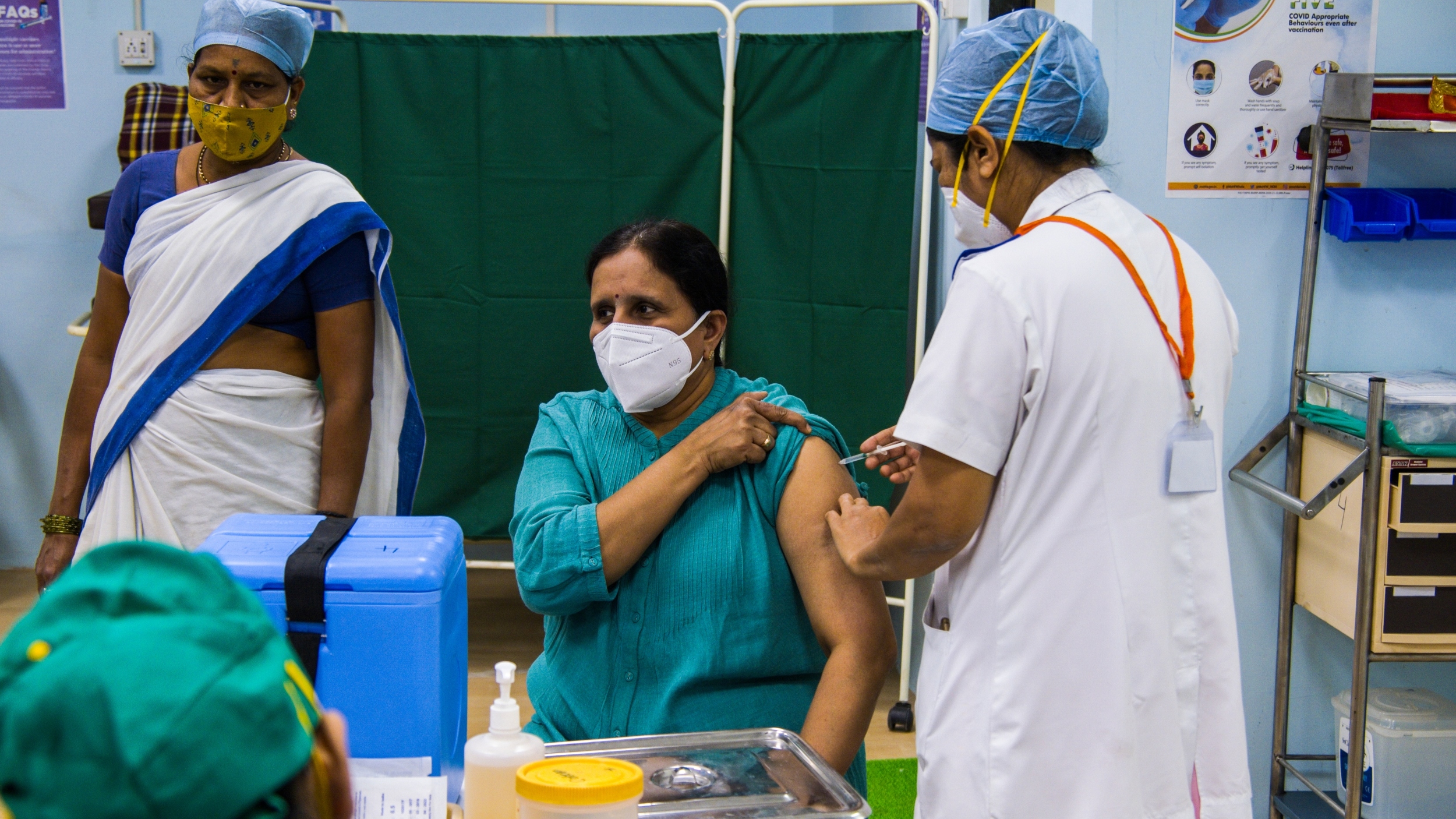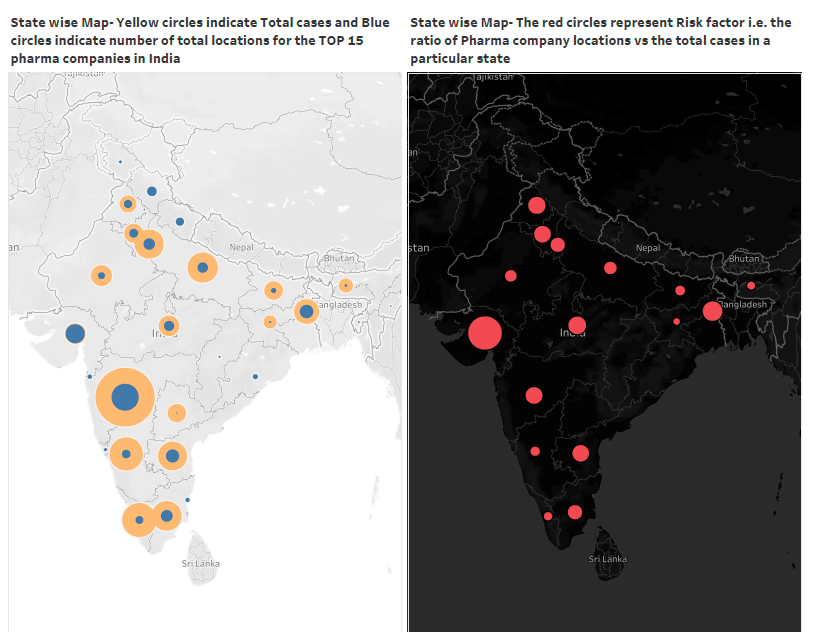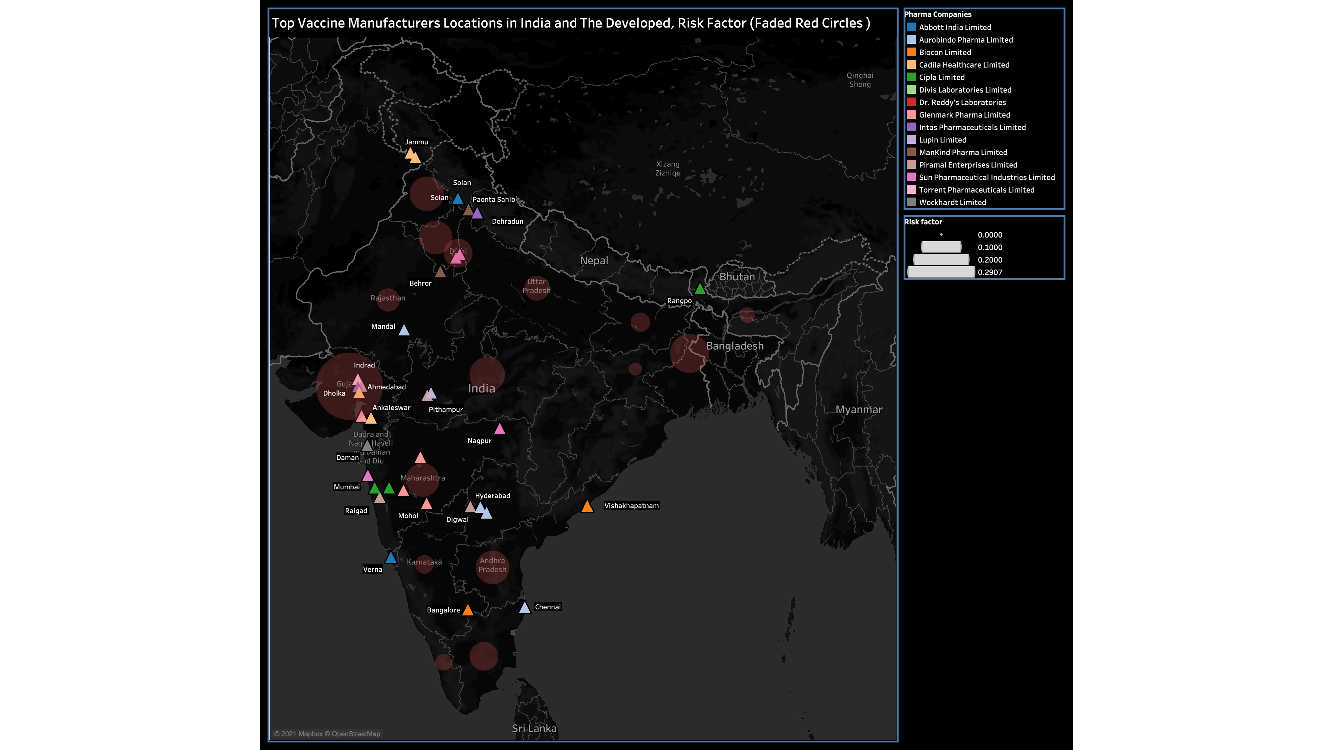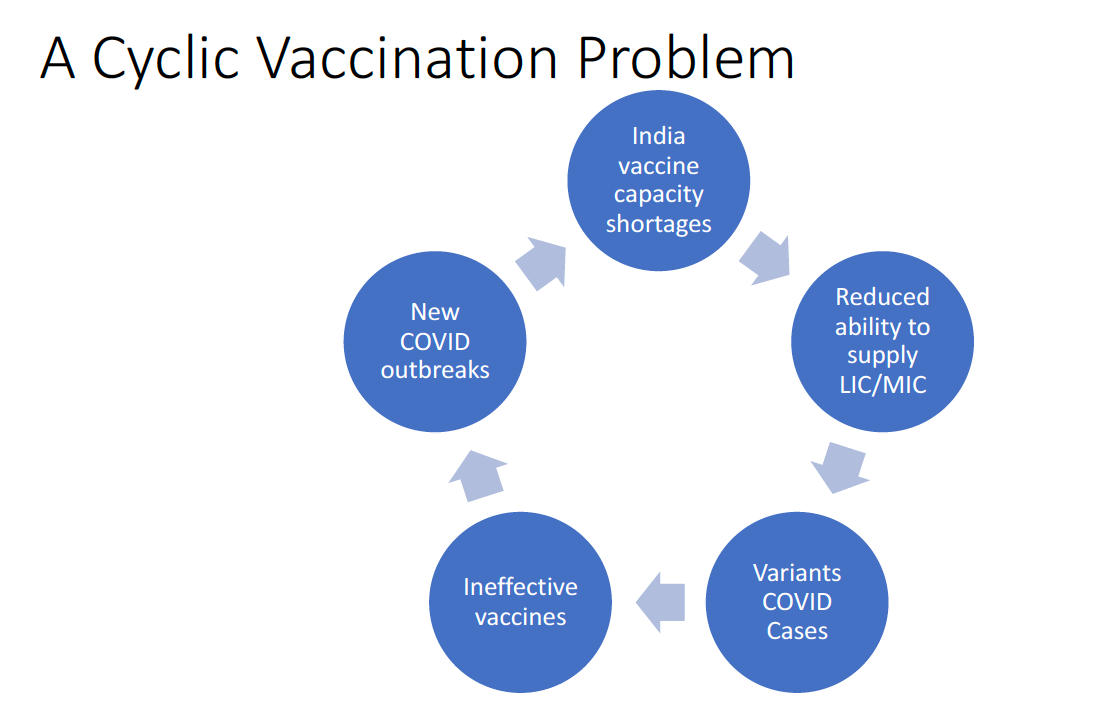Why the News from India is So Bad: A COVID Cycle that Will Continue

As the news rolls out that the vaccine rates are moving along here in the United States, it is easy for many people to become complacent. Restaurants and bars are opening up, and people are starting to return to markets and grocery stores. However, the news from overseas is horrific. On Saturday, India reported nearly 3,700 deaths, its highest daily toll, with 3,417 deaths on Sunday, according to a New York Times database. India experiences shortages of oxygen, and people all over the world are working to find oxygen concentrators, doing anything they can to help hospitals that are overwhelmed with patients who cannot breathe. Meanwhile, in Brazil, the number of deaths has topped 400,000, and there are fears that the crisis will continue to get worse. There seems to be a tidal pattern in the global fight against COVID; while some countries celebrate victory today, those that celebrated a few months ago are rapidly declining into new waves of infection. Mass vaccination may be the only way to prevent this cycle of relief and retrograde.
This is very bad news for several reasons. The vaccination rates for India are very low; less than 2%, compared to 62% in Israel, 51% in the UK, 44% in the US, and 42% in Chile and Hungary. This is concerning because, not only does India have low vaccination rates, but it is also one of the top manufacturers of vaccines in the world. As we have stated for a year now, you have to vaccinate the vaccination value chain. As we see critical pharma manufacturing and raw material sources decline into mass outbreaks, we fear a major disruption in the global fight against the disease. Earlier this year, India was sending vaccines (more than 60M) to low income countries (LIC’s) and medium income countries, while its own people were not being vaccinated. At the time, Prime Minister Modi declared victory on COVID, and opened up the country to weddings, religious festivals, and public events. This proved to be a disastrous move, and the virus came back with a vengeance.
But the problem does not just lie with India. Western countries have done little to stem the virus from spreading. The US is trying to improve this situation with large defense production act investments in vaccine development, while promising 60M doses of additional vaccines for other countries, like India[1]. However, Indian manufacturers have complained that they have not seen much of the raw materials needed for their production efforts promised by the US. There is still a growing realization that the vaccine nationalism many wealthy nations have embraced has the potential to backfire, prolonging the global pandemic. While those countries have been cornering supplies of the first vaccines for their world-leading rollouts, places like India have run short, allowing the virus to run wild.
The big problem is that India is one of the largest vaccine manufacturers in the world. Many people, including the WTO and WHO, were counting on India to supply the developing world with vaccines, due to the large capacity of the industry to produce vaccines through the Serum Institute of India Ltd., the world’s largest vaccine maker and the country’s main supplier of Covid-19 shots. The SII is racing to keep up with Indian states’ orders but its production facilities currently produce 60 to 70 million doses a month and hope to ramp up to 100 million by July. Will this be enough?
We conducted an analysis of vaccine capacity in India, and compared this mapping to the areas where the largest COVID outbreaks were occurring. This is shown below, and is especially worrisome. If you look at the trends and where we see the most cases… it spells trouble, especially when it comes to areas of active pharmaceutical ingredient (API) access and vaccine manufacturing. The Serum Institute of India (SII) is in Maharashtra, where the most cases are occurring. Also, one of the largest pharma companies, Sun, and most of the API manufacturers, are in this same area. In one of the largest cities, Delhi, India has ordered its army to send its oxygen from army reserves to hospital while retired military medical personnel have been called up to help. This activity today is primarily focused on saving lives, as it should be.
The figure below shows the location of the top 15 pharmaceutical companies within that city. The larger the circle, the more the cases – the larger the blue circle is relative to the yellow circle, the greater the number of companies in that cluster that are at risk due to COVID cases, and are at risk of being shut down. On average, the US is at about 9.7% of a case to population ratio, with 32M cases, compared to India’s 18.4M cases. In general, the US doubles India on cases and deaths, despite the massive population differences. But, as India is experiencing this surge without the benefit of higher vaccination rates as the US is dipping from a formerly massive level during a rapidly improved vaccination campaign, we are going to see that change.

Can COVID shut down manufacturing? It most certainly can. Think about what happened in meat processing facilities in the US, back in April of 2020, to the meat processors.
Another figure is shown below – the top pharma companies in India are shown in the top figure – the red circles overlaid on them show the regions hit the hardest by COVID cases.

Here is the problem we see going forward, shown in the figure below. Starting at the top – India is facing significant vaccine capacity production shortages, which is then leading to a limited ability to supply low income/medium income countries. COVAX, for instance, was counting on India to produce vaccines for these regions. Low vaccination rates in turn will lead to a greater number of variants emerging – which we are already seeing in India. These variants, may or may not be able to be assuaged by the current set of vaccines that populations, including the US, are being inoculated with. This, again, could lead to new forms of variant Covid outbreaks – which would require boosters to deal with. This, in turn, will result in new cases in India, which could again lead to significant shortages in the developing world. A cycle of problems. This cycle could likely extend the current pandemic cycle to a period of 5 years or more into the future. This is the real danger we face.
Recent news articles are calling for releasing intellectual property (IP) requirements, and pressure is mounting on President Biden to loosen IP and patent protections on corona vaccines. The assumption is that doing so will increase production capacity – which is not at all certain. Loosening IP restrictions may not resolve the issue – as the real problem is a lack of capacity upstream for materials to produce the vaccine. There is also the issue of tech transfer – making a vaccine is complicated, and would require companies like Pfizer and Moderna to train countries on how to produce it, as well as equipment installation, etc.
None of this is going to be easy. A better solution would be to create a global control tower, to allow people to see the current location of vaccine supplies and upstream supplies, to enable better coordination of vaccine distribution globally. We are all in this together. Unless we can figure out how to halt the flow of new variants, and increase the flow of vaccines to the world, we will likely be stuck in this cycle for the next 5 – 8 years.

[1] https://www.bbc.com/news/world-asia-india-55571793